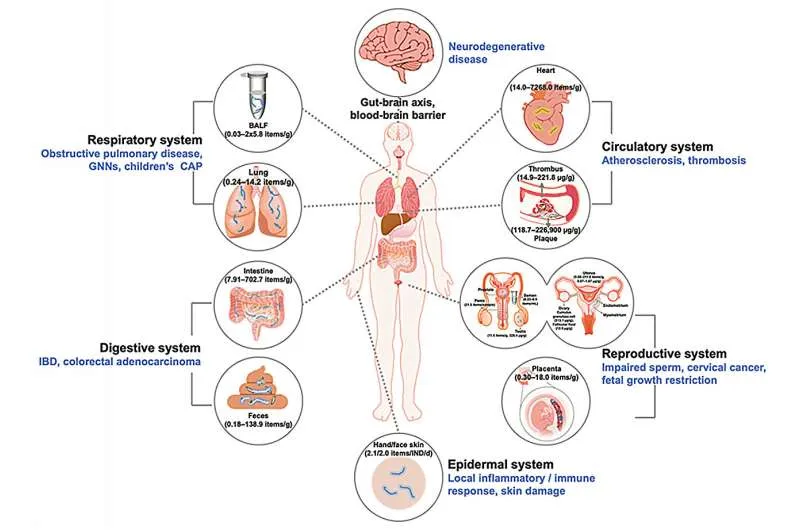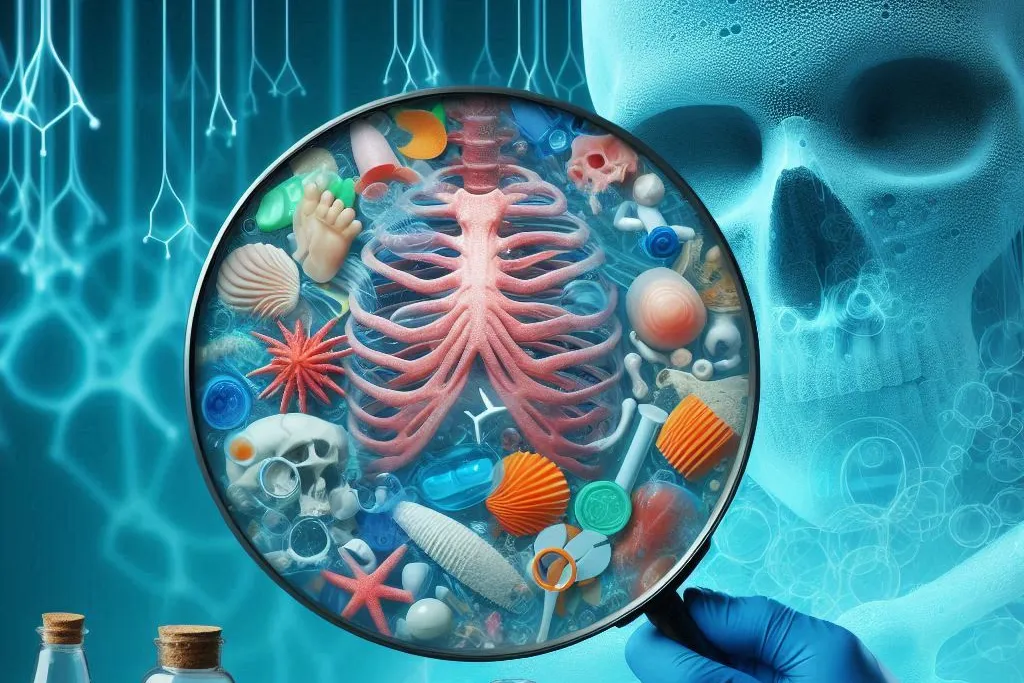Unraveling the Hidden Health Risks of Microplastics
Uncover the health risks of microplastics and the challenges in removing them from the environment and human tissues.

Research conducted by Zhejiang Agriculture and Forestry University in China has explored the presence of microplastics in humans through a metadata analysis. The findings reveal a concerning connection between micro and nanoplastic (MNP) concentrations in damaged tissues and their association with various health conditions.
Plastic consumption has risen dramatically, from 1.5 million metric tons in the 1950s to nearly 390.7 million in 2021. This surge in plastic use in consumer products has contributed to a rise in microscopic plastic pollution, which circulates in soil and waterways, ultimately accumulating in the environment, food chains, and human tissues.
Reliable methods for identifying and quantifying MNPs in human tissues are currently insufficient. The establishment of dependable data linking MNPs to human diseases is critical for evaluating potential risks and implementing effective mitigation strategies.

In the study, “Mapping micro(nano)plastics in various organ systems: Their emerging links to human diseases?” published in TrAC Trends in Analytical Chemistry, 61 available research articles were collected for MNP detection in human tissues, along with 840 articles focused on MNP toxicological mechanisms.
Spectroscopy, microscopy, and pyrolysis-gas chromatography/mass spectrometry methods were employed to identify polymer types in various tissues. Toxicological studies utilized cell models and animal experiments to investigate oxidative stress, inflammatory responses, and associated signaling pathways.
The studies revealed particles in multiple organ systems, including skin, arteries, veins, thrombi, bone marrow, testes, semen, uterus, and placenta. MNPs were also identified in the digestive system, spanning from saliva to feces, liver, and gallstones.
Within the respiratory system, MNPs were present in lung tissue, with microscopic fibers commonly found in bronchoalveolar lavage fluid and sputum.
Positive correlations were observed between the abundance of particles and certain disorders, including inflammatory bowel disease, thrombosis, cervical cancer, and uterine fibroids.
Toxicological tests indicated that MNPs may trigger oxidative stress, mitochondrial dysfunction, inflammatory responses, and apoptosis in various cell types. Additionally, concerns at the organ level, such as the potential onset of neurodegenerative diseases when MNPs cross the blood-brain barrier, were noted.
A critical finding in the metadata analysis was that MNP levels tended to be higher in tissues with lesions compared to non-lesioned tissues. This included inflamed intestines, fibrotic lungs, and cancerous growths, suggesting a potential connection between MNP accumulation and local pathology.
An intriguing “what came first, the chicken or the egg” dilemma arises, with lesions showing higher concentrations of MNPs.
“The chicken or egg problem has an obvious solution, as eggs predate chickens by hundreds of millions of years. Refining the question to ‘what came first, the chicken or the chicken’s egg’ could imply that the first chicken emerged from the egg of a non-chicken fowl predecessor, but would require still further refinement as to whether ‘chicken’s egg’ belongs to the fowl, the chicken within, or requires a chicken to lay it.”

In the case of “what came first, the lesion or the microplastic,” it is possible that MNPs contribute to inflammation, oxidative stress, and cellular damage, potentially causing or exacerbating tissue lesions. Alternatively, lesions may accumulate more MNPs in areas where tissue damage has already occurred. While current findings do not establish a direct cause-and-effect relationship, they provide valuable targets for further investigation.
At present, no conventional methods exist for removing microplastics from the environment or human tissues. Although efforts to discover environmental mitigation strategies are underway, developing effective methods to address the diverse particle sizes and chemistries of MNPs embedded in living tissues presents a significant, and possibly insurmountable, challenge.
https://doi.org/10.1016/j.trac.2024.118114
Abstract
Micro(nano)plastic (MNP) contamination has become an urgent global environmental issue, causing immeasurable potential harm to humans. However, direct evidence on the impact of MNPs on human health remains limited. This article summarizes related research hotspots, maps MNPs in various human organ systems, and emphasizes their alarming links with diseases. There is growing evidence that MNPs are present in the respiratory/digestive tract, skin surfaces, blood (vessels), and reproductive organs. The existence of these MNPs is positively correlated with the occurrence of tissue lesions, such as inflammatory bowel disease, atherosclerosis, thrombosis, and cervical cancer. MNPs can be internalized by human cells, causing oxidative stress and pro-inflammatory responses, and leading to genotoxicity and apoptosis. MNPs may even cross the human gut-brain axis and blood-brain barrier, inducing neurodegenerative diseases. The potential hazards of MNPs to humans require urgent attention, and additional monitoring experiments and epidemiological studies are needed to further elucidate the relevant mechanisms.
